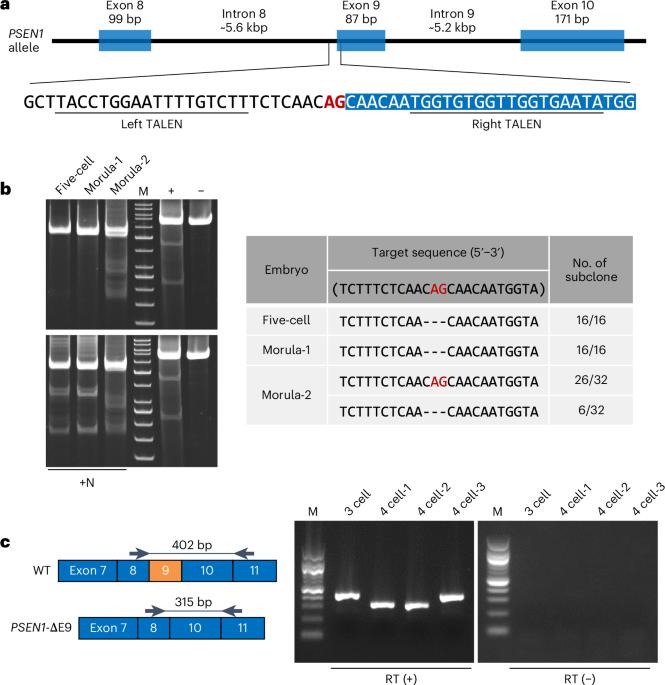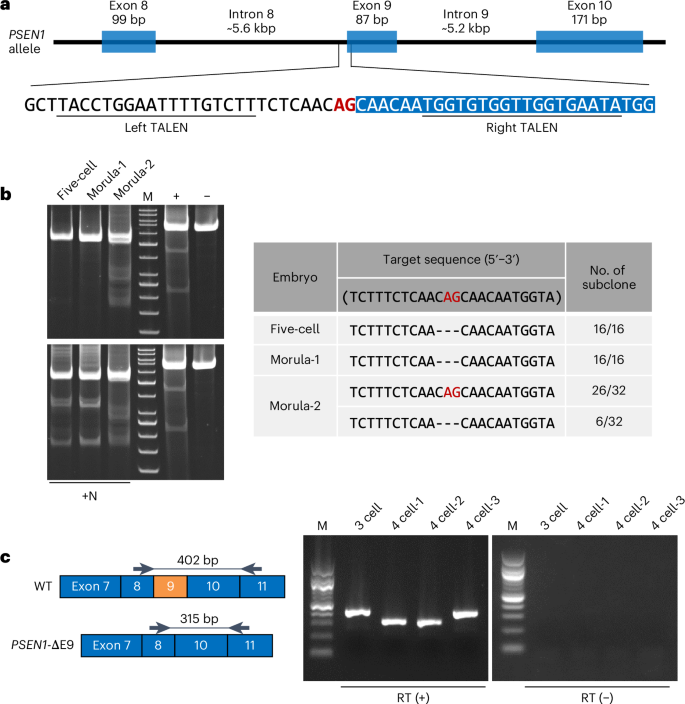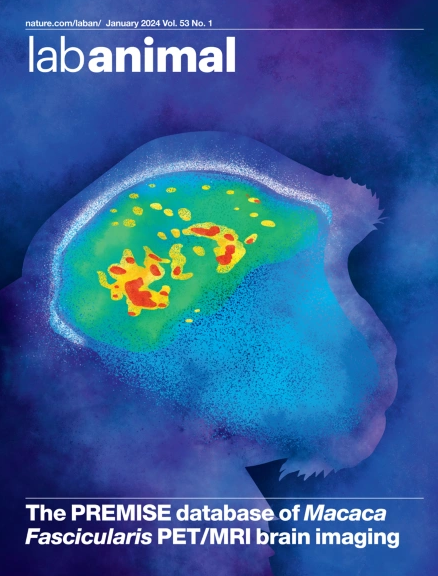Production of a heterozygous exon skipping model of common marmosets using gene-editing technology
IF 5.9
3区 农林科学
Q1 VETERINARY SCIENCES
引用次数: 0
Abstract
Nonhuman primates (NHPs), which are closely related to humans, are useful in biomedical research, and an increasing number of NHP disease models have been reported using gene editing. However, many disease-related genes cause perinatal death when manipulated homozygously by gene editing. In addition, NHP resources, which are limited, should be efficiently used. Here, to address these issues, we developed a method of introducing heterozygous genetic modifications into common marmosets by combining Platinum transcription activator-like effector nuclease (TALEN) and a gene-editing strategy in oocytes. We succeeded in introducing the heterozygous exon 9 deletion mutation in the presenilin 1 gene, which causes familial Alzheimer’s disease in humans, using this technology. As a result, we obtained animals with the expected genotypes and confirmed several Alzheimer’s disease-related biochemical changes. This study suggests that highly efficient heterozygosity-oriented gene editing is possible using TALEN and oocytes and is an effective method for producing genetically modified animals. This study shows that using gene-editing technology in oocytes using Platinum TALEN is an effective method for producing genetically modified marmosets by exon skipping.


利用基因编辑技术制作普通狨猴杂合外显子缺失模型
与人类关系密切的非人灵长类动物(NHPs)在生物医学研究中非常有用,越来越多的非人灵长类动物疾病模型被报道使用基因编辑技术。然而,许多与疾病相关的基因在通过基因编辑进行同源操作时会导致围产期死亡。此外,应有效利用有限的 NHP 资源。为了解决这些问题,我们开发了一种将白金转录激活剂样效应核酸酶(TALEN)与卵母细胞基因编辑策略相结合的方法,将杂合基因修饰导入普通狨猴。我们利用这一技术成功地导入了导致人类家族性阿尔茨海默病的 presenilin 1 基因的杂合外显子 9 缺失突变。结果,我们获得了具有预期基因型的动物,并证实了几种与阿尔茨海默病相关的生化变化。这项研究表明,利用 TALEN 和卵母细胞可以进行高效的杂合性基因编辑,是生产转基因动物的有效方法。
本文章由计算机程序翻译,如有差异,请以英文原文为准。
求助全文
约1分钟内获得全文
求助全文
来源期刊

Lab Animal
农林科学-兽医学
CiteScore
0.60
自引率
2.90%
发文量
181
审稿时长
>36 weeks
期刊介绍:
LabAnimal is a Nature Research journal dedicated to in vivo science and technology that improves our basic understanding and use of model organisms of human health and disease. In addition to basic research, methods and technologies, LabAnimal also covers important news, business and regulatory matters that impact the development and application of model organisms for preclinical research.
LabAnimal's focus is on innovative in vivo methods, research and technology covering a wide range of model organisms. Our broad scope ensures that the work we publish reaches the widest possible audience. LabAnimal provides a rigorous and fair peer review of manuscripts, high standards for copyediting and production, and efficient publication.
 求助内容:
求助内容: 应助结果提醒方式:
应助结果提醒方式:


